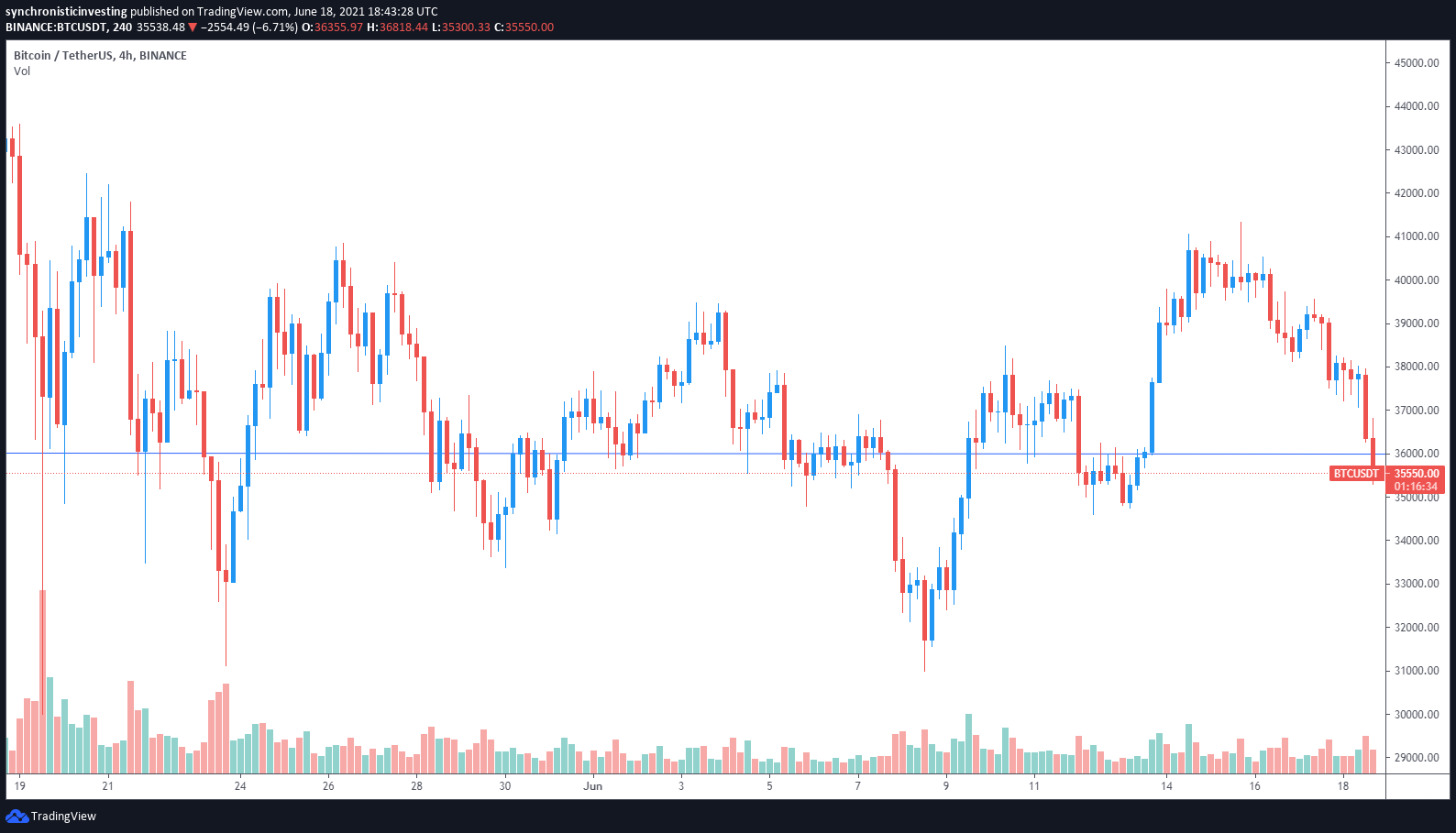On June 18, Bitcoin (BTC) and traditional markets faced another day of downward pressure comments from the United States Federal Reserve about the possibility of raising interest rates sooner than expected has led to a spike in the price of the U.S. dollar at the expense of risk assets and treasury notes.
The Fed doesn’t deserve all the bla, however, as concerns about a further downturn for BTC have been building for weeks with much of the discussion focused on the approaching death-cross and what it means for the future of Bitcoin.
Death cross may happen in few days guys…be ready. strong bearish signal. Warning for traders$Btc #Bitcoin pic.twitter.com/RaBVZPKOnZ
— M?ss ÇRypTö (@infoNataliya) June 17, 2021
Today’s selling pulled Bitcoin price below the crucial $36,000 support, leading traders to forecast $32,500 as the next stop before Bitcoin revisits the swing low at $30,000.


Inflows to exchanges spiked before the sell-off
Data from the on-chain data analysis firm CryptoQuant shows that BTC netflows to exchanges provided some warning to observant traders ahead of this week’s drop from $41,000 to $36,000. A spike in BTC inflows to exchanges occurred on June 15 when BTC price hit $41,300 and then proceeded to decline by 15% over the next three days.

#Gemini is a whale pod for #BTC.
Looking back, we can see the largest corrections where caused by Gemini whales.
It’s safe to make the assumption that a positive $BTC netflow on Gemini could indicate a local top.
S/o @cryptoquant_com & @ki_young_ju for providing this data. pic.twitter.com/Y1SiqlSoSV
— Vish – @KryptoniteTrading (@KryptoniteTrade) June 16, 2021
With the Bitcoin netflow to exchanges balancing out over the past couple of days with inflows only slightly outpacing outflows, market participants now wait to see which way the price moves next as the dreaded death cross approaches.
Related: Traders search for bearish signals after Bitcoin futures enter backwardation
Smart money continues to accumulate
While investor fears are rising and some traders who bought between the March and May highs are selling at a loss, the total supply of Bitcoin held by long-term holders continues to increase after reaching a low in the middle of May.

Clemente suggested that long-term holders “continue to scoop up discounted BTC,” which has helped offset selling by short-term holders and he pointed to the fact that “accumulation is growing stronger.”
Overall, the short-term future for BTC remains risky as previous instances of a death-cross have been followed by a retracement that is similar “to the retrace that preceded the crossover,” according to cryptocurrency analyst and trader Rekt Capital.

The views and opinions expressed here are solely those of the author and do not necessarily reflect the views of Cointelegraph.com. Every investment and trading move involves risk, you should conduct your own research when making a decision.







Leave A Comment